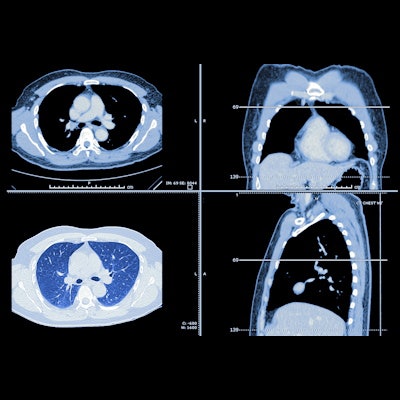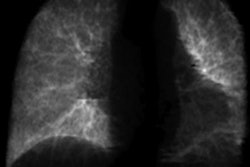
A short, pattern-based CT education module offered to general radiologists or novice readers improves their ability to spot interstitial lung disease -- a condition that is often difficult to diagnose, according to a presentation delivered November 30 at the RSNA meeting.
The findings prove that even simple education efforts can go a long way toward boosting reader performance, said presenter Dr. Ali Haider Dhanaliwala, PhD, of the University of Pennsylvania in Philadelphia.
"[Interstitial] lung disease has a low prevalence, with 67 to 98 cases per 100,000 exams," he told session attendees. "It's not something you would see very often in general practice, so it can be challenging for general radiologists to diagnose. And even among specialists there can be disagreement -- it's not a slam dunk Aunt Minnie every time you see it."
The condition often presents with nonspecific findings, making it tricky to develop differential diagnoses, Dhanaliwala noted. He and his colleagues explored whether an educational module that outlines chest CT patterns and suggests a simple "if/then" algorithm could improve the performance of these novice readers.
The study included 25 first-year radiology residents, pulmonary medicine fellows, and early-career general radiologists, as well as five fellowship-trained cardiothoracic radiologists. Each read a set of chest CT scans randomly chosen from a database of 852 cases of interstitial lung disease.
After these initial readings, the nonexpert study participants underwent a training module that included a flowchart that described a pattern-based approach for identifying key CT features and an "if this, then that" algorithm for translating findings into diagnosis. Patterns included the following:
- Peripheral scarring with honeycombing
- Peripheral scarring without honeycombing
- Axial scarring
- Cystic
- Centrilobular nodules
- Perilymphatic nodules
- GGOs
The readers then reviewed their cases and the researchers compared their pre- and post-training results.
Dhanaliwala's team found that, after the training, the performance of nonexpert thoracic CT readers showed an overall improvement of 17% in identifying interstitial lung disease within their top three differential diagnoses and an overall improvement of 11% in correctly identifying the four common conditions (i.e., connective tissue disease-related interstitial lung disease, idiopathic pulmonary fibrosis, sarcoid, and hypersensitivity pneumonitis).
In fact, after undergoing training, these nonexpert readers were able to place the correct diagnosis in their top three differentials at a similar rate as the expert readers (64.3% compared with 65%) -- although the expert readers still performed better than their novice counterparts when it came to identifying the top one diagnosis, at 48% compared with 41.2%, Dhanaliwala said.
The takeaway? Education works, according to Dhanaliwala.
"Teaching helps," he said. "Our training module for diagnosing diffuse parenchymal lung diseases from CT elevated non-expert radiologists to the level of cardiothoracic-trained radiologists in the creation of a differential diagnosis."





















